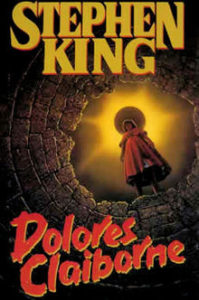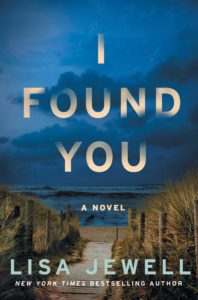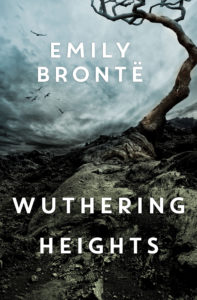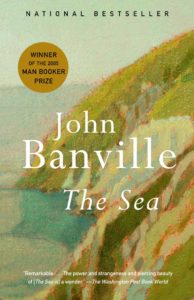When I wrote In The Vines, it was important to me to capture the pot of senses we live in in New England. Especially those of us lucky enough to live near the Atlantic. Senses so deep and definite, I might say they form a wholly distinct emotion. When I sit on my porch in the morning in a sea-fog, so thick I taste salt on my lips, when I walk to the harbor and stand in awe of the bruise-blaze sunset, when I continue on so as to stand on the cliffs and listen to the rumbling drums of the tide, what is this? This displacement all those senses together provides? A feeling of something bigger than I am, more majestic, something wholly frightening but freeing at the same time. I could feel trapped by the boundary of the cliff walls—or I could imagine the horizon beyond offers endless freedom.
Such a setting is prime for the tensions and extremes of gothics and thrillers. Indeed, one of the key elements of a gothic novel is a mysterious or foreboding atmosphere, and so, setting a gothic novel seaside certainly provides this necessary element.
Such a setting is prime for the tensions and extremes of gothics and thrillers. Indeed, one of the key elements of a gothic novel is a mysterious or foreboding atmosphere…Wallace Stevens wrote my all-time favorite poem, The Idea of Order at Key West. The poem is, first off, absolutely gorgeous. But what’s more, it is exactly this notion I’m getting at. It conveys so well the pot of senses triggered by the sea that the sea becomes a character itself. To quote two lines, “For she was the maker of the song she sang. The ever-hooded, tragic-gestured sea.”
The following gothics and thrillers are those I highly recommend as just plain great, riveting reads. They are also stories in which the sea plays a pivotal role or crucial backdrop. In other words, the story wouldn’t be the same without the sea.

Stephen King, Dolores Claiborne
Stephen King is the master of tension-filled New England atmosphere. And Dolores Claiborne is an excellent example, it being centered on an island in Maine. In it, Dolores Claiborne is accused of murdering her wealthy employer, Vera Donovan. When Dolores’ estranged daughter comes to the island to help her mother, they must revisit the horror of their past. The entire tale takes place on an island, and every event is surrounded by the sea. All comings and goings must be by ferry, thus offering entrapment, but also escape. Given that one of the main themes of the novel is isolation, it is easy to see why King picked this setting.

Emily Carpenter, The Weight of Lies
Emily Carpenter is another master of atmosphere. In her gripping thriller, The Weight of Lies, a young woman travels to Bonny Island, Georgia, to investigate (so she can write a tell-all memoir) the circumstances around her mother writing a cult classic horror decades before. Carpenter weaves within the main tale chapters from the cult classic, titled Kitten, in such a masterful way, you are doubly riveted: by the cult classic and also the main story. Throughout the novel, the sea serves an integral part, sometimes providing danger, sometimes salvation, but always beauty, such as wild horses running on the beach.

Ariel Dorfman, Death and the Maiden
So fine, you caught me. I snuck a play in the mix. But I just can’t do a list of stories in which the sea is an integral backdrop without including the masterpiece play, Death and the Maiden, which follows Paulina, a former political prisoner of a dictatorship, who was raped by her captor, a man who concealed his face and identity. She is now free and the dictatorship has been toppled, the country a new democracy. We find Paulina living with her husband at their secluded seaside home. One night her husband brings a man to their house, and Paulina is convinced the visitor has the voice of her rapist and that he is, indeed, her rapist. This classic has been dubbed a moral thriller. The tension and themes of feminism, justice, punishment, and forgiveness are pitch perfect. I highly recommend reading it, for although it is a play, it reads like a novella. The closeness of the sea to Paulina’s secluded house keeps the ominous and dangerous underpinnings to the narrative constant. Like you’re trapped by the water that is always there as a backstop. In writing this piece, I searched to find if anyone else had noted the importance of the sea to the story, and lo and behold, Elaine Calibara put together a whole presentation on the topic.

Lisa Jewell, I Found You
Alice Lake, a single mom, finds a man on the beach outside her East Yorkshire house. Guy has no idea who he is and no memory as to how he got there. No ID. The story follows Alice helping this man regain his life, and in doing so, unravels a crime in the past. I Found You was my first Lisa Jewell book and made me one of her fans. There’s something about being “with” main character Alice Lake, in her beach house, in her lovely chaos and all the colors around her, that I found incredibly comforting, such that I craved it. The novel’s seaside setting is integral in providing the extremes of the story: the comforting walks on the beach with Alice vs. the horror of a crime that defines the man’s life.

Elisabeth Elo, North of Boston
A 2014 Booklist Best Crime Novel of the Year, North of Boston is a riveting, literary thriller by one of crime fiction’s master craftswomen. North of Boston is a dark and deeply atmospheric thriller with a tough-talking Bostonian, Pirio Kasparov. One night, Pirio is on her friend Ned’s fishing boat when a freighter rams into them, dumping them both in the North Atlantic. Pirio miraculously survives four hours in the icy water. Ned, not so much. Pirio doesn’t think the accident is an accident, and when she follows her suspicions to the Canadian arctic, she confronts a terrifying plot.
It’s not often that both I and my husband obsess-love the same book. There are lots of books we both like well enough, and lots of others one of us thinks the other is insane for loving. But North of Boston is one of the rare gems we’re both obsessed over. Reading Elo is like getting a masterclass on literary construction baked into a stay-up-all-night page-turner. Her imagination in North of Boston is refreshingly surprising at every turn. And you can’t have North of Boston without that cold, cold ocean water.

Katharine Weber, The Music Lesson
A good rule to live by is this: as soon as you enter an independent book store, go straight to the Staff Picks. That’s exactly what I did when I entered The Bookstore of Gloucester (Massachusetts), and that’s how I found the gem, The Music Lesson. OH MY GOODNESS this book is so gorgeously written. Cosmo agrees. How can you not love a book about a woman all alone with a stolen Vermeer in an Irish cottage by the sea? How did she get there? How did the painting? What’s up with this high-crime? The setting in a seaside cottage allows for isolation, but also renewal, and explorations on a dark and intriguing past contrasted with love.

Daphne du Maurier, Rebecca
Are you even allowed to do a list of seaside gothics and not include the classic Rebecca? I bet I’d be kicked out of Gothic Thriller, Inc. if I even tried. And for good reason: Rebecca is a brilliant masterpiece that uses a seaside setting to drive the plot and forbidding atmosphere.
I won’t belabor the importance of the sea to this classic, I think it’s well known. As for the plot: the story begins in Monte Carlo where the heroine falls for widower Maxim de Winter. When she arrives at his massive country estate in Cornwall, called Manderley, it is there that she encounters the lingering evil and oppression surrounding Maxim’s late wife.

Monica Hesse, American Fire
American Fire is a riveting true-crime book about love-gone-all-kinds-of-ways wrong between a couple that committed a shocking number of arsons along the Eastern Shore of Virginia’s Accomack County. Accomack has a depressed economy, a topic that fuels much of the story (and indeed, America’s current political atmosphere). And while the fires occur mostly around the center spine of the county, in rural and agricultural areas, I found myself constantly questioning the economics of the area given the closeness of the shore. It was always there in my mind, visions of tourist towns, beach towns, seafood industries, fishermen. In writing this piece, I started to go down the rabbit hole of research in trying to answer this question I’ve had since reading American Fire: Why isn’t it more developed and successful like many other East Coast shore areas? Perhaps that’s the genius of American Fire, it’s got me still thinking about it a whole year later. I finished it in two sittings and I’ve bought it for several people.

Emily Bronte, Wuthering Heights
Okay, so another classic on the list, Wuthering Heights. And true, it may not be strictly seaside, but it is surrounded by all those ominous, isolating moors, which, given that a foreboding atmosphere is a key tenet of the gothic novel, is essentially the same thing as the sea.
Wuthering Heights is about the intensely passionate love between Catherine Earnshaw and Heathcliff, who had been adopted by Catherine’s father. After abuse in the household, Heathcliff leaves, believing his love for Catherine is not reciprocated. When he returns as a successful and reinvented man, violence and turbulence ensues.

John Banville, The Sea
I hadn’t read Banville before, but the cover of the The Sea caught my eye while browsing in the Portsmouth Book & Bar. So I plopped on their big cushy couch, ordered myself a goblet of red, and immediately got hooked. I finished The Sea the very next morning. While I’m sure I could be called out in categorizing The Sea as a thriller (actually it’s a literary masterpiece), there is a compelling mystery the reader is asked to discover concerning events surrounding death in the past, and this event drives the whole novel. Max Morden goes back to a seaside town where he spent holidays as a child. In exploring the power and tricks and illusions of memory, Max recalls the circumstances around this death.
John Banville’s style is a style I admire greatly, and so it is fitting we should end this list on The Sea. Obviously the sea plays a key role, hello the title and the location of the key event. But it also provides something intangible, a feeling throughout reading, a constant intoxicating rhythm, that emotion you get when in hearing distance to the lull of waves. When your thoughts spread and your mind eases. Somehow Banville captured the sea’s rhythmic magic in the way he constructed the narrative, such that the reader is buoyed and carried along. It may seem strange, but I felt as if I were sun-drenched and floating in sparkling water while reading The Sea.

















